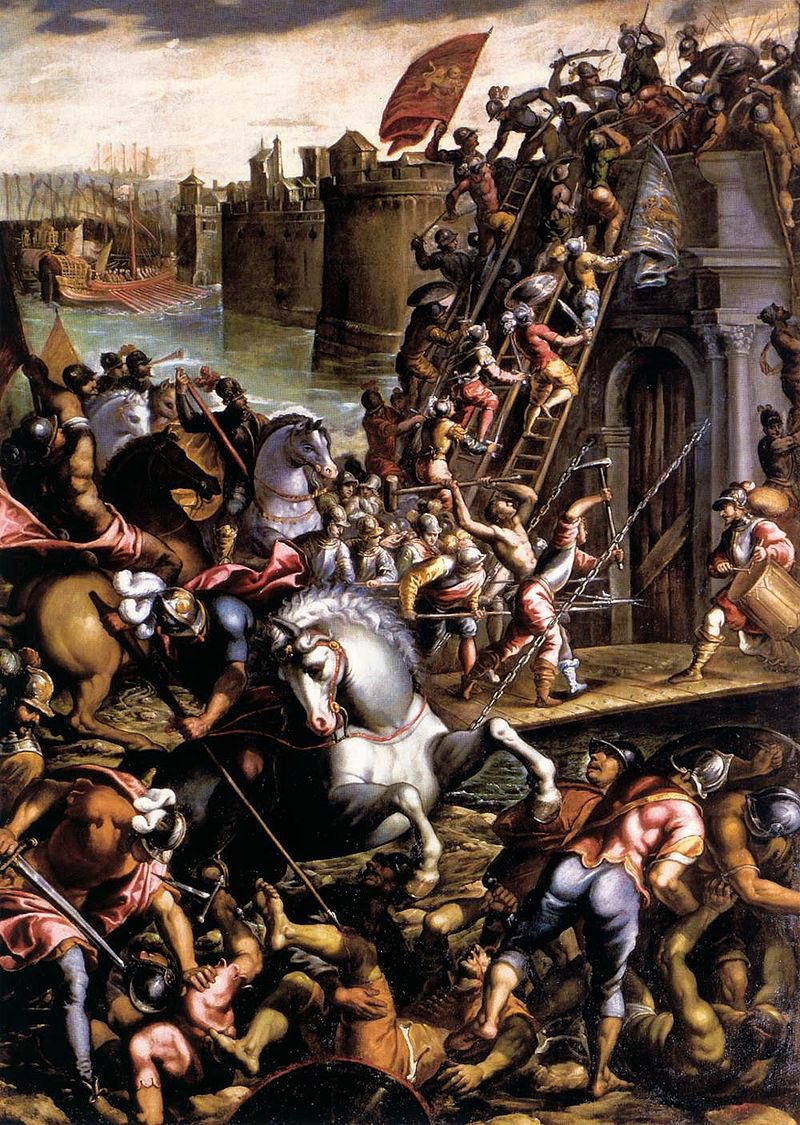
Although Rus and Norse mercenaries had been fighting in the service of the Byzantine Empire as early as 874, the typical date used as the founding of an official “Varangian Guard” comes from the reign of Basil ll. Basil’s early reign was marked by rebellion. 2/12 

In 987, the general Bardas Phokas led a rebellion and captured most of Byzantine Anatolia. At the end of the year his army set into a siege of Abydos, a city on the Dardanelles. If Abydos fell, Phokas’s army could cut off access to the Aegean and besiege Constantinople. (3/12) 

Basil retained the loyalty of the Anatolian coast of the Black Sea and Thrace, but his situation was desperate. Without the Anatolian Themes, Basil did not have the manpower to crush the rebellion. (4/12)
To add to Basil’s problems, the Rus, under the leadership of Vladimir the Great, besieged and conquered the port of Chersonesus in 988. With the Rus in control of Crimea, the specter of a devastating Rus raid of Basil’s lands in Thrace and Chaldia grew. (5/12) 

Vladimir and Basil spent the rest of 988 negotiating. Vladimir wanted to convert to Christianity and forge closer ties with the Empire. In exchange for Basil’s sister Anna’s hand in marriage, Vladimir agreed to return Chersonesus and provide Basil with 6,000 warriors. (6/12) 

No Byzantine princess born in the imperial palace had ever married a foreign ruler, much less a “barbarian,” but Basil was in desperate straits. With the arrival of the 6,000 Rus warriors, Basil launched a surprise attack on the rebel encampment across the Bosporus. (7/12)
Basil easily defeated the enemy army and executed Delphinas, Phokas’s general in Chrysopolis. Basil then marched on Abydos, where Phokas’s army was escalating the siege in desperation. On April 16th, 989 the two armies prepared for battle outside the city. (8/12) 

Bardas Phokas rode out from his army that morning seeking individual combat with Basil. Before he reached Basil’s lines, Phokas died suddenly of a seizure in view of both armies. After this the rebel force rapidly disintegrated. (9/12)
The Rus warriors ferociously pursued the rebels, killing many. Contemporary sources describe how the Varangians “cheerfully slaughtered the fleeing enemy.” (10/12)
With Phokas dead the rebellion faded. The wealth the Rus warriors gained made continued service under Basil attractive. Basil was impressed by the prowess of the Rus in battle. The Varangians filled his need for for loyal soldiers, unaffected by internal Byzantine politics. 11/12
Basil II added the “Τάγμα τῶν Βαραγγίων” or “Varangian Guard” to the Tagmata as a 6,000 strong contingent of Rus and Norse warriors. The Varangians would go on to become the most famous unit in the Byzantine Army and serve with distinction for hundreds of years. (12/12) 

@threadreaderapp unroll
• • •
Missing some Tweet in this thread? You can try to
force a refresh























